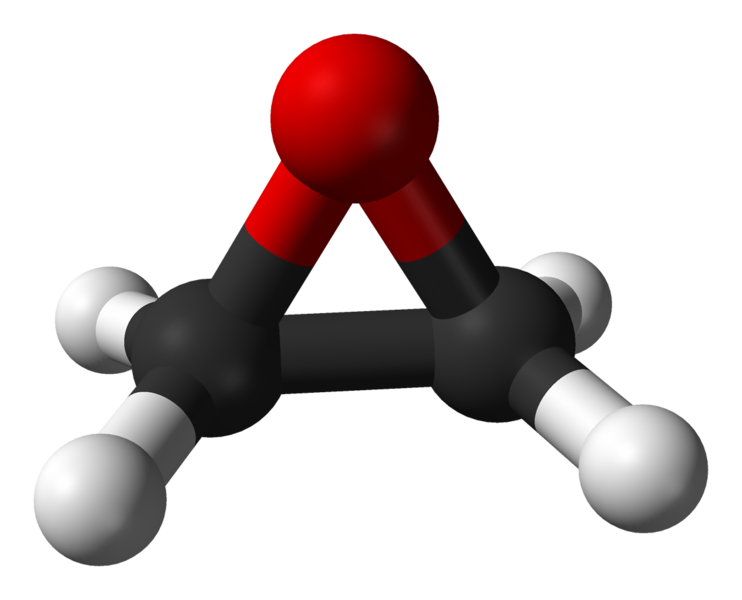What is ethylene oxide?
At room temperature, ethylene oxide is a flammable colorless gas with a sweet odor. It is used primarily to produce other chemicals, including antifreeze. In smaller amounts, ethylene oxide is used as a pesticide and a sterilizing agent. The ability of ethylene oxide to damage DNA makes it an effective sterilizing agent but also accounts for its cancer-causing activity.
How are people exposed to ethylene oxide?
The primary routes of human exposure to ethylene oxide are inhalation and ingestion, which may occur through occupational, consumer, or environmental exposure. Because ethylene oxide is highly explosive and reactive, the equipment used for its processing generally consists of tightly closed and highly automated systems, which decreases the risk of occupational exposure.
Despite these precautions, workers and people who live near industrial facilities that produce or use ethylene oxide may be exposed to ethylene oxide through uncontrolled industrial emissions. The general population may also be exposed through tobacco smoke and the use of products that have been sterilized with ethylene oxide, such as medical products, cosmetics, and beekeeping equipment.
Which cancers are associated with exposure to ethylene oxide?
Lymphoma and leukemia are the cancers most frequently reported to be associated with occupational exposure to ethylene oxide. Stomach and breast cancers may also be associated with ethylene oxide exposure.
How can exposures be reduced?
The U.S. Occupational Safety and Health Administration has information about limiting occupational exposure to ethylene oxide.
Selected References:
- Health Effects Notebook for Hazardous Air Pollutants: Ethylene Oxide. Washington, DC: U.S. Environmental Protection Agency, 2018. Also available online. Last accessed June 1, 2023.
- International Agency for Research on Cancer. Ethylene Oxide, IARC Monographs on the Evaluation of Carcinogenic Risks to Humans, Volume 100F. Lyon, France: World Health Organization, 2012. Also available online. Last accessed June 10, 2024.
- National Toxicology Program. Ethylene Oxide, Report on Carcinogens, Fifteenth Edition. Triangle Park, NC: National Institute of Environmental Health and Safety, 2021. Also available online. Last accessed December 5, 2022.
- Jones RR, Fisher JA, Medgyesi DN, et al. Ethylene oxide emissions and incident breast cancer and non-Hodgkin lymphoma in a US cohort. Journal of the National Cancer Institute 2023; 115 (4): 405-412. [PubMed Abstract]. Also available online. Last accessed April 11, 2024.
